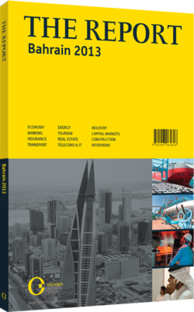Residential property: The housing market is beginning to stabilise
With regulatory, political and other events adding turbulence to the market in recent years, the residential segment is one of the more dynamic parts of the real estate market in Bahrain. More promising still is that future growth in this sector will be sustainable, in contrast to the often-speculative growth in the sector in the past decade. “During the years leading up to the 2008 financial crisis there was a lot of speculation in the market. This created a distortion in residential housing prices; a two-bedroom apartment could be rented for the price of a villa,” Amin Al Arrayed, general manager of First Bahrain, told OBG.
CHANGING PRICES: The social unrest of 2011 led many wealthy expatriates to move from villas in the villages of Western Region of Bahrain like Sar to elsewhere in the kingdom. In line with the recent tribulations, an increasing number of expatriates who remain unsure about the future of the market are now opting to rent rather than buy property. Areas popular with renters include the Seef and Juffair areas in the capital, Manama. According to a report by CBRE, a global real estate company, by the end of 2012 the prices had yet to fully recover in Juffair following the market’s depreciation. In 2009 a two-bedroom apartment in Juffair could be rented for BD800 ($2105) per month. That same space could be rented for BD600 ($1579) per month at the beginning of 2013.
While rental prices in mid-2013 stand lower than they did four years ago, they are more stable, and as such interest in the area remains strong. According to an October 2012 survey of Bahrain’s property market by British real estate consultancy Cluttons, rents are beginning to rise in Amwaj Islands and the Adliya area. Amwaj Islands, built on reclaimed land off the coast of Muharraq, is popular with professional expatriates in Bahrain who are living alone and looking to rent luxury apartments. The popularity of Amwaj Islands is partly due to the fact that foreign ownership of land is permissible, which gives this area a larger potential pool of buyers than elsewhere in Bahrain. “The year 2012 was much better for Bahrain’s real estate market than 2011,” R Lakshmanan, CEO of Sakana Housing Solutions, a sharia-compliant financial institution, told OBG.
“Market prices stabilised towards the latter half of 2012, and the overall number of transactions has increased in comparison to 2011. However, there is only a small secondary market for homes in certain areas,” Lakshmanan said. One area that has remained stable is Riffa, a suburb of Manama inland from the coast. Riffa is home to a number of important government institutions and public complexes, such as the University of Bahrain and the Bahrain National Stadium. “Interest in developments such as Amwaj Island and Riffa Views has increased, due to their being perceived as safer locations,” Lakshmanan said.
Another residential area that has been less affected by the events of the past few years is Hamala and similar areas in western Bahrain. Interest in housing in these areas is likely to remain strong, in part due to the area’s proximity to the King Fahd Causeway that links the kingdom to neighbouring Saudi Arabia and its easy access to freeways leading to Manama.
SOCIAL HOUSING EFFECT: The government is looking to provide homes for the 54,000 Bahraini citizens who have been waiting on the affordable housing list. The government’s emphasis on affordable and social housing has had a big impact on the real estate market. Even the high-profile Diyar Al Muharraq project, a new community being constructed offshore on an island, is expected to provide hundreds of affordable units alongside a host of luxury offerings.
The effect on the existing real estate market when this large amount of affordable and social housing becomes available is unclear. However, new social housing is unlikely to create a large second-hand market for older housing units. In the GCC real estate is traditionally seen as a legacy investment, and property once owned is rarely traded beyond the family. As such most of the second-hand property market is by and large traded between expatriate workers.
You have reached the limit of premium articles you can view for free.
Choose from the options below to purchase print or digital editions of our Reports. You can also purchase a website subscription giving you unlimited access to all of our Reports online for 12 months.
If you have already purchased this Report or have a website subscription, please login to continue.

